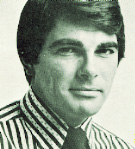
Tom Moulton's concepts singlehandedly created a new industry of remixing--producing records with greater dance impact. He leapfrogged Philadelphia sonics by rebalancing the frequency range, extending the high frequencies much further than Motown ever did. "Because 45s were geared for radio, they were all 'middle,' and you couldn't cut a lot of [bass] onto the record. A lot of records didn't have the fidelity and sounded terrible. But you were playing them for the songs, not the fidelity."
That regard for the integrity of a song also guided Moulton in the studio. He not only sharpened sound for high-volume nightclub play, but he also restructured records, setting up hooks and repeating the best parts, greatly amplifying the original song scheme's tension and release. He'd tweak levels obsessively all through the record--effectively rephrasing a track or vocal by hitting the volume control--when he felt it would increase intensity. "I was so wired into the song. They thought I was crazy. But you go for the blood and guts, the thing that really counts in a song." Moulton's hook might be a mistake by the players, and he points out that the insane sonic power of "Disco Inferno" happened when he was compensating for a console that was set up wrong. Repeatedly--with the simple woodblock in "More, More, More (Part 1)," in the strong but never overdone pop pump of "Instant Replay"-- Moulton made good records stronger. His blueprint has been used thousands of times over.
Moulton worked in promotion for Scepter Records, and mixed DCA Productions' "Dream World" by Don Downing for the label. In 1974, when DCA called him to work on Gloria Gaynor's first album, he made history. Never Can Say Goodbye featured a side-long medley of three long songs segued together. Meco Monardo says it was "a revelation" when Moulton extended three-minute songs to more than six by lengthening the instrumental. But Moulton knew by instinct that this would intensify and modulate the impact of a song or a series of songs: "You start here [he points down], and go allll the way up." Incredibly, Moulton's credit does not appear on the album because of a potential conflict: he'd by then launched the first music trade-paper column on the scene, "Disco Mix," in Billboard.
Like everything else in disco, formula set into remixing, but it wasn't Moulton's fault. He often critiqued remixers for making music into a DJ tool, instead of mixing to maximize the original intent of a song. He used drum breaks, for example, as transitions within a song, to set up an emotional rush with the return of the rest of the music, or when key changes made a break necessary to create dramatic structure--not merely because drum breaks made it easier for a DJ to mix in or out of a record. "People have said, 'You make disco records,' and I said: 'Wrong. I make records you can dance to.' I wouldn't know how to make a record just for discos." source: http://www.rhino.com/features/liners/75595lin7.html
Tom Moulton was a fashion model on hiatus from the music business when he visited Fire Island's Botel during a photo shoot. "I got a charge out of it, all these white people dancing to black music." Painstakingly, he spent 80 hours making a 90-minute dance tape using sound-on-sound and vari-speed to create a nonstop build. The Botel's owner rejected the tape, but the competing Sandpiper offered to listen, and Moulton left the reel. At 2:30 on a Saturday morning, Moulton was awakened by a call from the Sandpiper that was unintelligible except for the screaming of dancers. To a tape!
"People have said, 'You make disco records,' and I said: 'Wrong. I make records you can dance to.' I wouldn't know how to make a record just for discos."